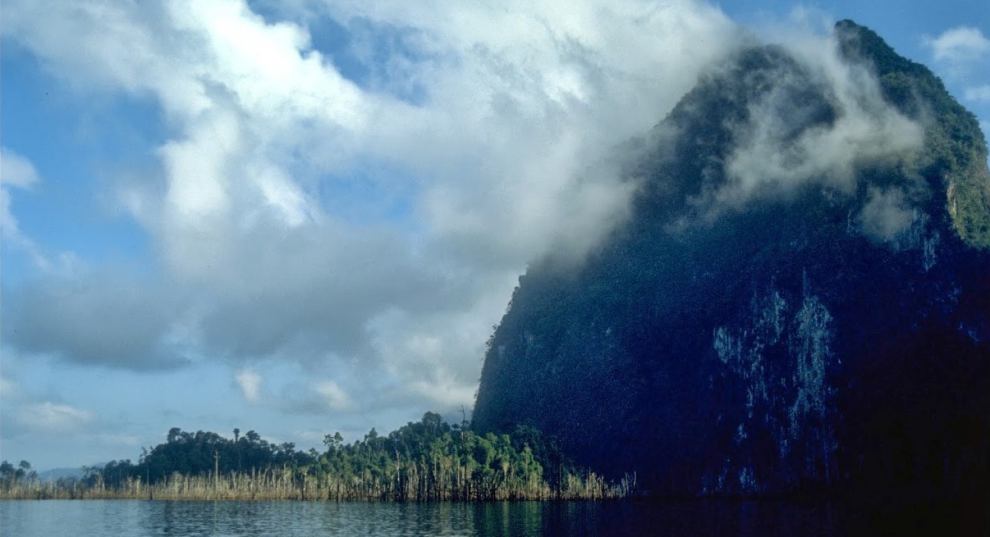Science News
Fragmentation and Extinction
October 8, 2013
by Molly Michelson

As an increasing number of conservation efforts focus on setting land aside for protection, the burning question is, how much land is enough? Are these “islands” of habitat sufficient to sustain native animal populations?
Although habitat loss is as old as human civilization itself, the patchwork that fragmentation creates is expanding at an alarming rate, especially in the tropics. Forests around the globe are being destroyed to make room for towns, roads, crops, and livestock. Increasingly, researchers are questioning how these disturbances affect animal populations. Now, in an unwitting experiment, they are finding the devastating answers.
In 1987, the government of Thailand created Chiew Larn Reservoir, damming a river in the southern part of the country. As the reservoir filled, the mountains in the area became small islands—over a hundred of them—small, isolated habitats in what had been a large tropical forest.
Beginning in 1990, seeing an opportunity to study the dam’s fragmentation effects, a team of researchers began monitoring the mammal populations surviving on several islands. The team returned last year to resurvey the same islands.
Initially, the native rats, mice, and tree shrews seemed unaffected by their changed circumstances, but 25 years later, all have disappeared. “It was like ecological Armageddon,” says Luke Gibson, of the National University of Singapore, and lead author of a study published recently in Science. “Nobody imagined we’d see such catastrophic local extinctions.”
“There seemed to be two culprits,” says co-author William Laurance of James Cook University in Australia. “Native mammals suffered the harmful effects of population isolation, and they also had to deal with a devastating invader—the Malayan field rat.”
The team discovered that in just a few years, the invading rat grew so abundant on the islands that it had displaced nearly all of the small mammals native to the region. The field rat normally favors villages and agricultural lands but clearly did well in this type of human-disturbed environment as well.
“This tells us that the double whammy of habitat fragmentation and invading species can be fatal for native wildlife,” says another co-author, Tony Lynam, of the Wildlife Conservation Society. “And that’s frightening because invaders are increasing in disturbed and fragmented habitats around the world.”
“To save wildlife and the ecological services it provides in a post-natural world, we need to protect and manage the largest possible areas,” adds co-author David Woodruff of UC San Diego. “Our results show that small isolated populations collapse rapidly for ecological and genetic reasons and that smaller protected areas won’t save nature. But a mass extinction is avoidable if we learn from these lessons.”
Gibson agrees. “The bottom line is that we must conserve large, intact habitats for nature. That’s the only way we can ensure biodiversity will survive.”
Image: Luke Gibson